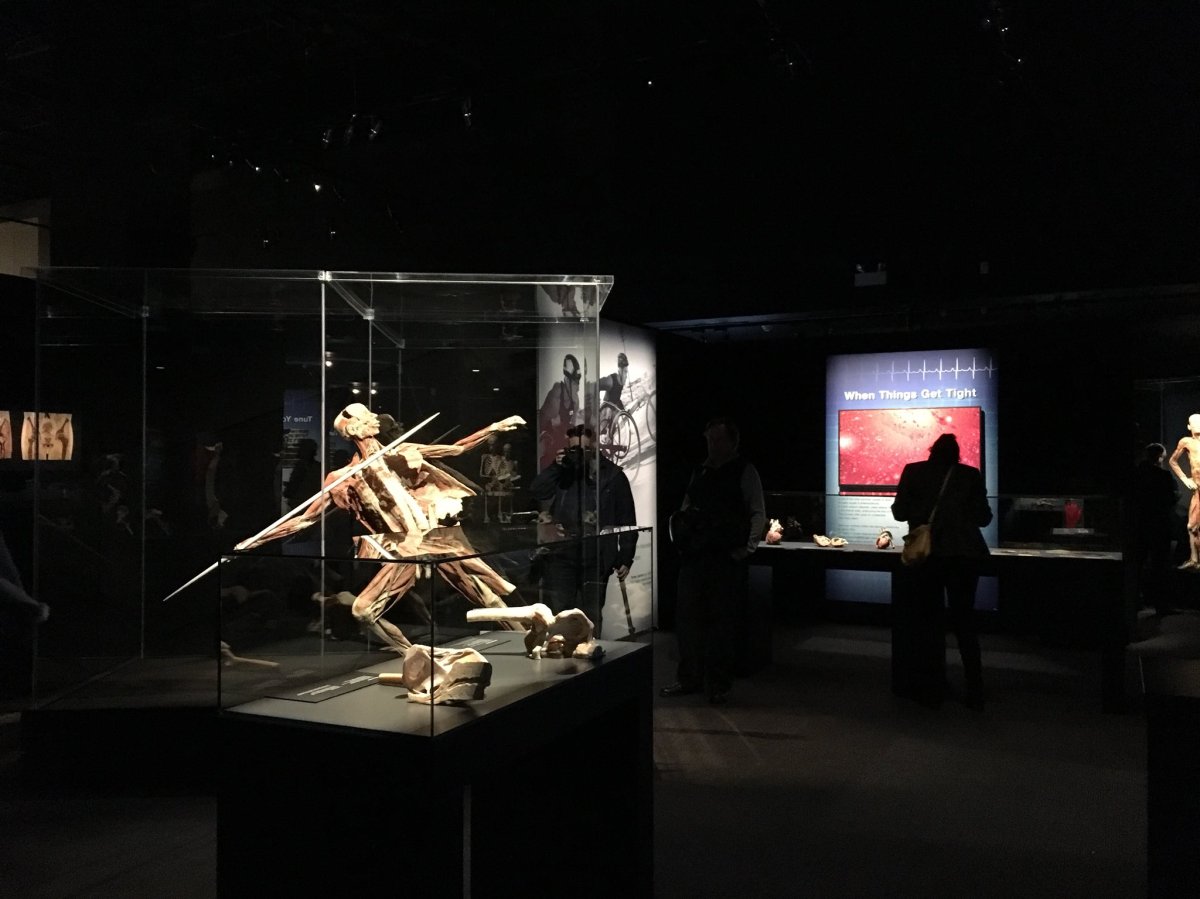An international travelling exhibit that features preserved human bodies is making its Atlantic Canadian debut at Halifax’s Museum of Natural History.

The Body Worlds RX exhibit focuses on human health and the effects of disease by showcasing healthy and diseased body parts from donors. The exhibit also includes full cadavers. Topics range from heart disease to the effects of smoking and obesity.
“More than 43 million people have seen these shows worldwide and they’ve never been in Atlantic Canada before and so that’s really exciting for us in our own little museum,” said Jeff Gray, a curator at the Museum of Natural History, during a media preview on Thursday.
READ: New exhibition offers unique look at the human body
Public interest in the exhibit is so great, the museum is not only extending its hours but will also be opening the exhibit on Friday — one day earlier than scheduled.
“We’ve had some of our largest social media interest that we’ve ever had for an exhibit,” said Gray. “We have more high school groups booked to come to visit the museum now than we’ve had in the last 10 years combined.”
Gray says the museum has tried for years to bring Body Worlds to Halifax, but up until now, the museum space was simply too small to accommodate it. Body Worlds recently created this particular exhibit, which is designed for smaller spaces.
Angelina Whalley, the exhibit’s curator from Germany, spent the past few days in Halifax putting the final touches on the displays.
“I really tried in this smaller space exhibition to show and explain as much as we can,” she said. “I think it really gives a great overview to anyone interested in the human body.”
The exhibit uses a technique called plastination, where fluids from the body are removed and replaced with plastics at Body Worlds’ lab in Germany. The specimens are from donors, who signed up for the program during their lives. There are currently more than 17,000 volunteers on their donor list.
“It sounds like a huge donor group but you must understand that many of them are still very young and have hopefully many, many years to come. So we need a certain roster to receive a certain amount of diseased bodies in the year that we would need,” Whalley said.
WATCH: Body Worlds exhibit giving public the opportunity to peer inside the human body
Body Worlds has received some backlash over the years since it began in 1995, however, Gray says he hasn’t experienced that in Halifax.
“If anyone feels that it’s controversial, it’s really more about their own ease with the subject matter that’s in the exhibit and we certainly respect that,” he said.
Whalley says she is often asked by international media whether her exhibits are appropriate for children.
“I find this exhibition helpful and important for young people because they still have their life in front of them,” Whalley said.
“They are the ones who are mostly interested in understanding who they are, what they are made of and particularly for them it’s necessary to help them understand what a vital and healthy lifestyle would look like.”
The exhibit will be at the Museum of Natural History until April 22.




Comments